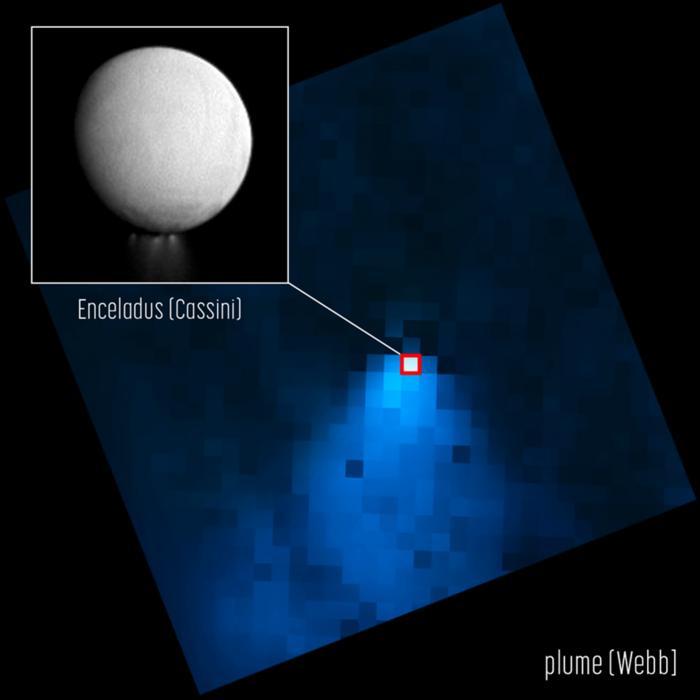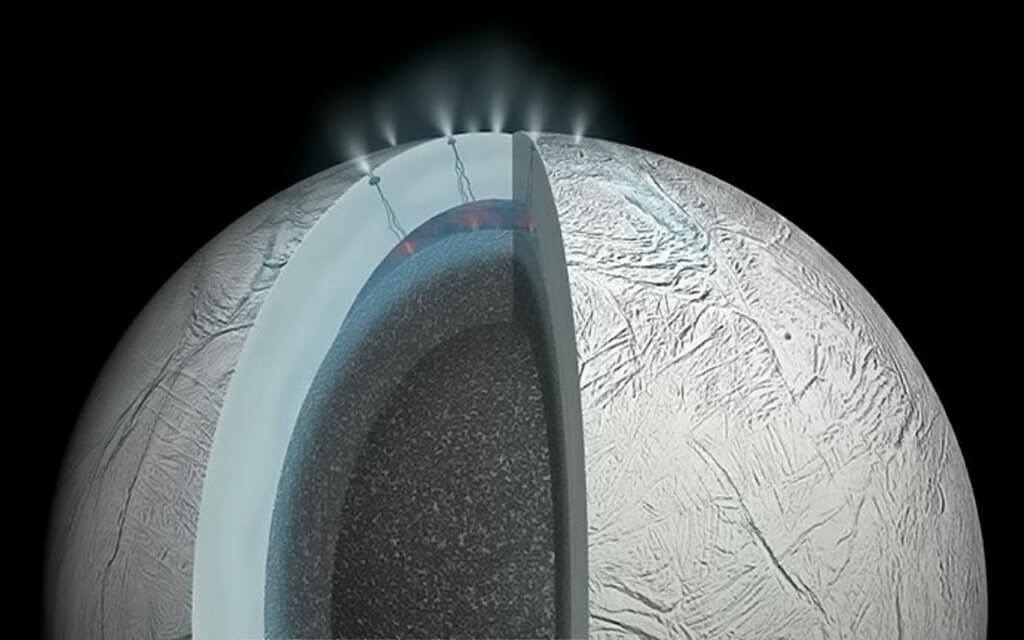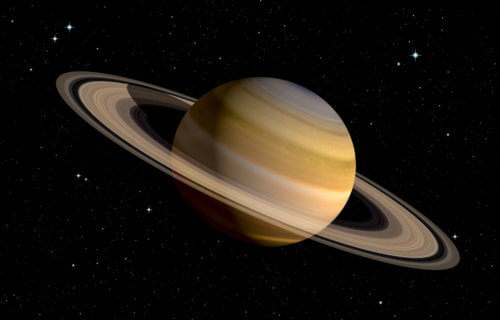SAN ANTONIO, Texas — The James Webb Space Telescope (JWST) has uncovered a towering body of water vapor over 6,000 miles long — the distance between the United States and Japan — on the surface of Saturn’s moon, Enceladus. The findings fuel further speculation that Saturn’s moon could be a hospitable area for life and that it helped to create Saturn’s famous rings.
The Cassini spacecraft first discovered a subsurface of liquid water on Enceladus during its 13-year mission of Saturn’s system. The probe took samples of ice grains and plumes of water vapor erupting into space from cracks in the moon’s frozen surface.
“Enceladus is one of the most dynamic objects in the solar system and is a prime target in humanity’s search for life beyond Earth,” says study co-author Christopher Glein, a leading expert in extraterrestrial oceanography at Southwest Research Institute, in a media release. “In the years since NASA’s Cassini spacecraft first looked at Enceladus, we never cease to be amazed by what we find is happening on this extraordinary moon.”
James Webb’s latest findings reveal even more about this mysterious frozen ocean.
“When I was looking at the data, at first, I was thinking I had to be wrong, it was just so shocking to map a plume more than 20 times the diameter of the moon,” explains Geronimo Villanueva, a researcher at NASA’s Goddard Space Flight Center and lead author of the paper. “The plume extends far beyond what we could have imagined.”

Could this moon be feeding Saturn’s rings?
More details on the large plume, or column of water, give a new theory about how this icy moon feeds the water supply for Saturn and its rings. As Enceladus revolves around Saturn in 33 hours, the moon ejects water leaving a donut-like halo behind. The water spreads as far as Saturn’s dense E-ring. The JWST data estimates 30 percent of the water stays on the moon while the other 70 spreads to the rest of Saturn’s system.
“The Webb observations, for the first time, are visually illustrating how the moon’s water vapor plumes are playing a role in the formation of the torus,” says Silvia Protopapa, an expert in the compositional analysis of icy bodies in the solar system at the Southwest Research Institute. “This serves as a stunning testament to Webb’s extraordinary abilities. I’m thrilled to be part of the Cycle 2 team as we initiate our search for new indications of habitability and plume activity on Enceladus.”

These discoveries will serve as a basis for another set of observations of Enceladus again with JWST in the next year. Some of the research will focus now on looking for signs of past life, such as organic signatures and hydrogen peroxide.
“Hydrogen peroxide is particularly interesting because it can provide much more potent sources of metabolic energy than what we previously identified. Cassini didn’t give us a clear answer on the availability of such strong oxidants on Enceladus,” says Glein.
This water may also be full of alien life
Recently, Glein’s team discovered that the water flowing out into space also contains the vital building blocks for life here on Earth. While examining the water particles from Enceladus, astronomers uncovered the presence of phosphorus — which is critical for the creation of DNA and RNA for all life on Earth. Moreover, the team notes that the concentrations of phosphorus on Enceladus are over 100 times greater than they are in our planet’s oceans.
As the study of these plumes continues, the team says that understanding the time variability of when the moon releases these gases can also help plan for future space missions.
The study is published in the journal Nature Astronomy.

